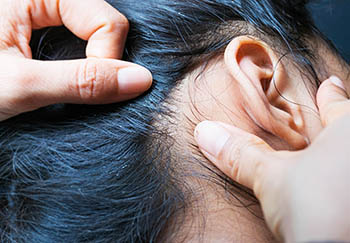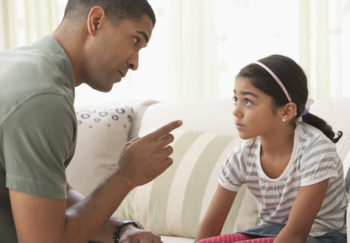
When your kids have head lice, it often throws family life into chaos: They miss school, you miss work, and you’ve got to do laundry and spend long, tedious hours picking nits (lice eggs) out of their hair. Perhaps you feel embarrassed and don’t want to tell anyone else, especially if your kids keep getting lice.
Head lice is incredibly common. The Centers for Disease Control and Prevention estimates that 6 to 12 million kids ages 3 to 11 get lice every year. Yet there’s a lot of misinformation, stigmas and lice and nit myths.
I turned to UVA pediatrician Emily Wong, MD, to clear up some of the confusion and explain the best lice treatments.
Lice and Nit Myths and Facts
Myth: Kids need to stay home from school until they’re completely nit-free.
Fact: Wong disagrees with “nit-free policies” in schools, which require that kids stay home until they have no nits whatsoever left in their hair. Because getting rid of nits is the hardest and most time-consuming part of the process, kids may miss several days of school. It’s also easy to mistake empty egg casings on the hair for live nit eggs.
“I think it’s reasonable to ask that they start treatment,” Wong says. “But once they start, they shouldn’t be kept out of school.”
She adds that lice might seem embarrassing, but they’re not a health hazard.
Myth: Home remedies for lice, like mayonnaise and petroleum jelly, are effective.
Fact: One study supports suffocating lice with Cetaphil cleanser and a hair dryer, Wong says. But there’s no evidence that any other household product or cleanser smothers lice. And no matter what treatment you use, you still should manually pull out all visible lice and nits.
Myth: Lice are more attracted to clean hair.
Fact: There’s no research that supports or refutes this.
Myth: People who get lice have poor hygiene.
Fact: “It’s not a marker of poor hygiene,” Wong says. “Showering and regular shampoo aren’t going to get rid of lice.”
Can’t Get Rid of Lice?
Make an appointment with a Charlottesville pediatrician.
This myth concerns Wong, because talking about lice is actually one way to prevent it or catch it sooner. “People are so embarrassed, they don’t want to tell anyone,” she says. “And then friends won’t know to check their own children. So I think it’s better not to be embarrassed but tell people, tell the teachers.”
Lice Symptoms & The Difference Between Lice and Dandruff
The primary symptom is an itchy scalp, and you may not feel it until you’ve had lice for several weeks. Once you’ve had lice before, the itching tends to occur sooner, Wong says.
Live lice are large enough to see with the naked eye but can be elusive. Nits, or lice eggs, are tiny, and some people confuse them with dandruff. The difference is that dandruff will flake away, while nits cling to the hair shaft. Wong recommends using a head lamp to check; the nits will reflect the light.
Ways to Get Rid of Lice and Nits
There are several effective lice treatments. Whichever one you use, you’ll need to repeat the treatment after 7-10 days, in case you miss nits and they hatch.
Over-the-Counter Treatments with Permethrin or Pyrethrins
This is typically Wong’s first recommendation when parents contact her about lice. Look for a treatment at the drugstore with a permethrin or a pyrethrin listed as the active ingredient. These treatments kill lice but not nits.
Wet Combing
Combing the hair to remove lice doesn’t involve any chemicals, but it’s not as effective and is a lot of work, Wong says.
Cetaphil Cleanser
You can also try coating the hair and scalp completely with Cetaphil cleanser, drying the hair thoroughly, and leave it on overnight, which smothers the lice. This method is appealing to parents who want to avoid putting toxins on their child’s hair and scalp. Here’s what you do:
- Coat the hair and scalp completely with Cetaphil
- Dry the hair
- Leave it on overnight with a shower cap
- Wash the hair and remove the nits
Rosemary and Tea Tree Oil
Another over-the-counter treatment with rosemary and tea tree oil claims to dissolve nit glue, but it doesn’t kill lice. Wong recommends using products to prevent infestations — tea tree oil acts as a natural lice repellent.
Combing Out Lice and Removing Nits
Regardless of which treatment you use, you’re still going to need to pluck lice and nits out of your child’s hair. Most combs won’t remove nits completely, so you might need to pull them off the hair. Wong says live nits tend to be very close to the scalp; what looks like a nit farther away from the scalp may actually be an empty egg casing.
Most parents agree that pulling off the nits is the worst part of a lice infestation. But “if they do all that work up front, it really makes it less likely that it’s either going to be persistent or recurring,” Wong says.
Prescription Drugs
For resistant cases, there are some prescription drugs (such as malathion or ivermectin) which kill both lice and eggs. They usually cost much more and pose some risks to your child — for example, one is flammable. Wong typically recommends that parents start with over-the-counter treatments.
Removing Lice from Your House
Lice don’t survive for very long off humans. But to avoid spreading them or becoming re-infested:
- Wash all bedding and sleepwear
- Bag stuffed animals and soft items that can’t be washed for two weeks to kill any lice on them
- Vacuum your furniture
What to Do If Lice Keep Coming Back
Does it seem like your child just gets lice again and again? There are several things that could be happening:
- You never treated the lice adequately the first time.
- Your child has treatment-resistant lice.
- Your child keeps becoming reinfested, perhaps because of a friend or classmate with chronic lice.
In cases of resistant lice, Wong uses one of the prescription treatments. She also suggests trying tea tree oil to prevent lice reinfestation. But another effective treatment? For parents to talk to each other and talk to their child’s teacher, so they can detect other children who have lice and treat them.
“I think we probably would be able to control lice better if there wasn’t this stigma,” Wong says.

